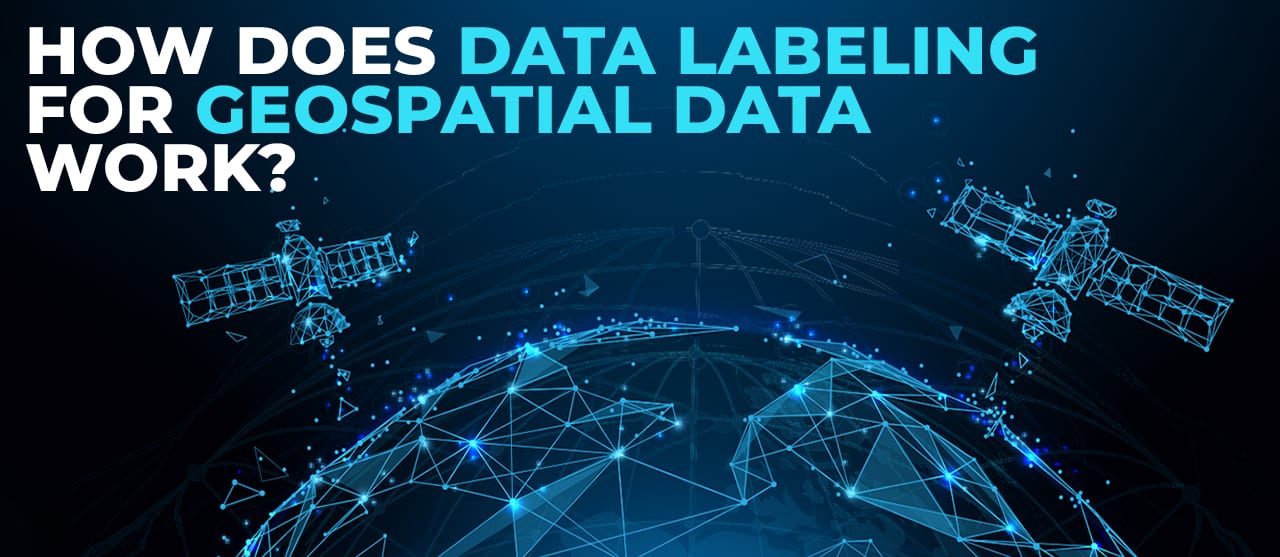
“Geospatial analytics will eat the world,” reads the title of a 2018 Forbes article. It takes a cue from a 2011 article where Marc Andreessen famously wrote – “Software is eating the world.” Fast forward to today, and it does seem like the next big wave of innovation is being driven by geospatial technology.
Geospatial data, i.e., data describing the geographical location of a point, region, object, or phenomenon, serves broad applications ranging from urban planning to disaster management and agriculture to transportation. People in the geospatial space believe that 80% of the world’s data is geospatial data. While it’s difficult to provide evidence for the same, it sure does make for a compelling story.
However, geospatial data, like any other data, has to be formatted and labeled before it can be processed. The geospatial models developed as a result of this processing can then be leveraged for the applications mentioned above. Today, several viable geospatial technologies like Geographic Information System (GIS), the Global Positioning System (GPS), remote sensing, etc., act as a testament to the wide-ranging applicability and the necessity of accurate geospatial data labeling.
So, let’s drill down a little bit and understand data labeling for geospatial data in terms of how it works if there are any challenges involved, and how those challenges can be addressed to realize a successful data labeling practice.
1. Collect The Relevant Geographical Data
Usually, geographical information is in the form of cartographic data sourced from remote sensors, existing maps, photographs, etc., and digital data that houses digital information such as that of a satellite’s imagery. Of course, data collection can be manual; however, it can also involve retrieving data from open-source datasets. In fact, most of the time, synthetic data for geospatial imagery serves as a great resource for model training.
2. Identify The Features To Be Labeled
The second step in the data labeling process is to identify the features to be labeled. These could be roads, buildings, etc., or they could be regions of interest. These features are represented using points, circles, lines, squares, polygons, etc., based on attributes like shape, size, or type.
3. Tag The Geospatial Data With Relevant Labels
Once the features are identified, they can be effectively labeled by using descriptive text or other relevant media that elaborates on the feature. This elaboration could indicate the name of the road, for example, or the name of a prominent building, etc. Ideally, this description should be as clear and precise as possible.
4. Refine The Labels
Quality assurance (QA) is integral to the geospatial data labeling process, for it can determine the precision with which the labels have been put in place. An automated QA process can improve the data quality tremendously by filtering out incorrect labels, etc. This can eventually help the AI systems and models to learn better, in turn, providing accurate and relevant insights.
5. Train The Algorithm
Now, it’s time to train the model based on what has been labeled in the first place. The labeled data is fed into the machine learning algorithms so that they can learn from it and drive specific business applications – such as navigation, natural disaster risk estimation, etc. Training also lends insight into which labels could be improved, if the data is enough, if the outcomes are in line with expectations, etc.
Use Cases Of Data Labeling For Geospatial Data
- Disaster Management & Recovery
AI models and systems can be trained on relevant imagery to provide predictions and forecasts on disaster risk. This can help the organizations in assessing the potential risks, establishing priorities, and eventually planning for recovery in case a disaster strikes. - Military Operations
In military operations, geospatial intelligence plays a significant role. For instance, terrain analysis helps the military to quickly recognize, assess, understand and plan measures for deployment, evacuation, and recovery from the battlefield. - Transportation
Technologies like GIS and GPS have already shown how they can help analyze traffic problems and aid in reducing accidents and optimizing routes. Apart from these, construction, urban management, agriculture, etc., are amongst those sectors that have successfully leveraged geospatial data and benefited immensely.
Challenges Of Data Labeling For Geospatial Data
- Quality Of The Dataset
The accuracy and consistency of the training dataset are the primary concerns here. With geospatial data, it’s immensely important to have access to the right data to avoid errors and incorrect forecasts. - Standardization Issues
Often, geospatial technologies fail to deliver because the data is labeled based on loose conventions. Therefore, relevant labeling guidelines should be established to avoid ambiguity in the data. - Technology Expertise
Technologies like Computer Vision (CV) and Natural Language Processing (NLP) can prove beneficial for geospatial annotation. However, for that, the in-house team should have the requisite skills and expertise.
How To Address These Challenges?
All considered, geospatial data labeling is a complex initiative to embark upon, given the diverse sources of data and the diverse applications that it may have to support. Hence, to ensure a smooth process and successful outcomes, you need to have the right tools and technologies at your disposal. This is where partnering with a data labeling expert would prove critical.
For example, at EnFuse, we help businesses with image, audio, video, and textual data labeling, so that the AI systems and models can be empowered to interpret, analyze and process geospatial data without any hassles. Interested in learning more? Get in touch with us today!

















Comment